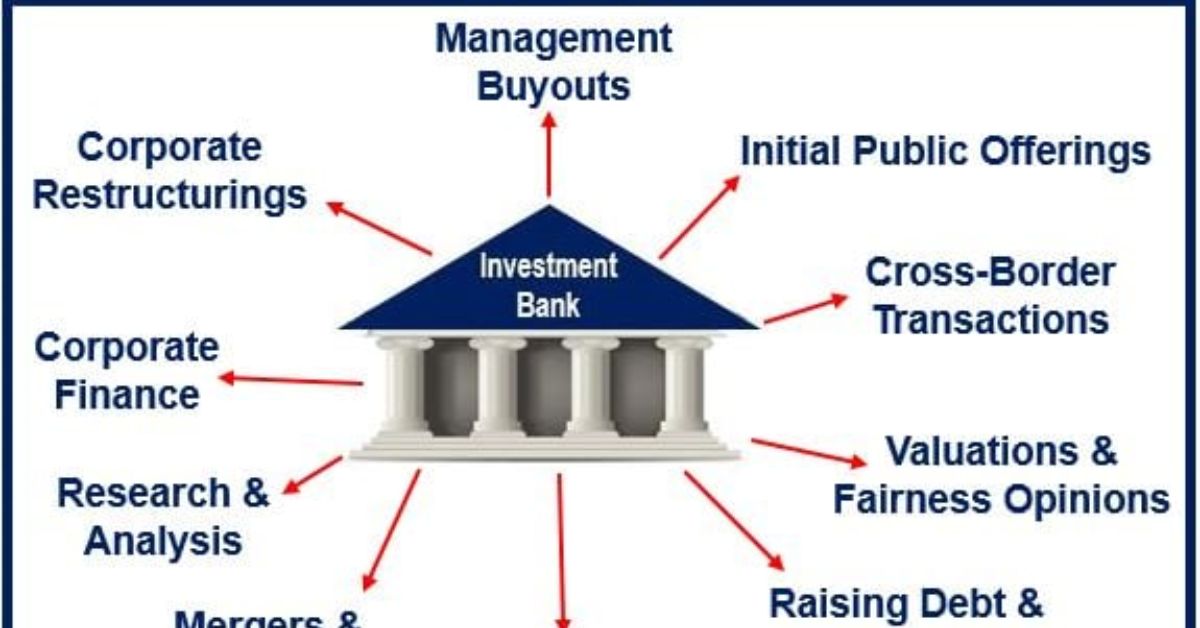While a company faces extreme economic problems, restructuring bankers are known as in to shop the day. However, what exactly does restructuring funding banking entail? This in-intensity manual will explore the important function those specialized specialists play in assisting distressed companies regain their economic fitness and long-term viability.
Understanding the Role of Restructuring Bankers
Restructuring bankers take on a high-stakes advisory function whilst corporations are scuffling with insolvency, immoderate debt responsibilities, or other threats to their stability. Their knowledge is engaged to very well verify the situation and chart a direction ahead, whether or not that includes negotiating with lenders, restructuring debt, repositioning property, or even pursuing formal financial disaster complaints.
A prominent latest instance is the debatable restructuring of Hertz after the rental vehicle massive filed for bankruptcy 11 financial disaster in 2020 amid the pandemic’s economic shockwaves. Restructuring advisors helped negotiate a $five.9 billion debt resolution and $1.2 billion in new equity investment to revive Hertz’s monetary destiny.
The Different Types of Restructuring Situations
Restructuring professionals are equipped to guide companies through a variety of financial distress scenarios requiring strategic intervention, including:
- Financial ruin lawsuits (chapter 7 liquidation or chapter eleven rehabilitation)
- Leveraged buyouts going through liquidity shortfalls
- Mergers or acquisitions in distress
- Businesses wearing unsustainable debt hundreds
- Firms present process fast restructuring for increase or specialization
Each state of affairs demands a tailored restructuring approach. As an instance, a business enterprise pursuing an ambitious leveraged buyout may additionally want advisors to renegotiate quantities of the debt undertaken for the purchase if their cash flows suddenly dip. In contrast, an extended-mounted but now flailing enterprise may require extra transformational operational restructuring.
Out-of-Court Restructuring vs. Formal Bankruptcy Proceedings
One key distinction in restructuring is whether the process will take place out-of-court through informal negotiation with creditors and other stakeholders, or via a formal, court-supervised legal bankruptcy filing.
| Out-of-Court | Bankruptcy Filing |
| Can be faster | Provides court oversight and legal protections |
| Avoids bankruptcy’s stigma | Automatic stay on debt collections |
| Maintains confidentiality | Greater ability to terminate contracts |
| Relies on creditor cooperation | Reduced creditor power |
A Day in the Life of a Restructuring Banker

Running as a restructuring investment banker is a quick-paced, dynamic position requiring super monetary modeling skills, negotiation prowess, interest to element, and the ability to thrive beneath intense pressure. Those professionals frequently find themselves deeply embedded within distressed businesses for months or years at a time.
It is like a marathon and a dash at the same time. you’re doing grueling analysis and working across the clock for weeks, however then extreme, high-stakes negotiations get heated where matters can pivot on an unmarried selection.
Anonymous Restructuring Banker
Restructuring bankers must have awesome verbal exchange capabilities to construct trust with debtors, creditors, traders, and other stakeholders even as negotiating jointly beneficial agreements that hold as much company value as feasible. A mixture of economic understanding, enterprise savvy, and innovative yet disciplined thinking is needed.
The field draws from backgrounds like:
- Investment banking
- Corporate law
- Public accounting
- Distressed asset investing
After gaining experience, top restructuring bankers at elite firms can eventually earn well into the seven figures for their high-stakes efforts.
Read As: WHAT IS THE FIRST FOUNDATION IN PERSONAL FINANCE?
Restructuring Investment Banking Groups at Major Firms
While all major banks maintain bankruptcy and restructuring advisory practices, a handful of Wall Street titans stand out for housing some of the largest and most renowned restructuring teams.
These include powerhouse groups at firms like:
- Lazard – Whose North American restructuring team recently advised global streaming giant Netflix on renegotiating lease obligations.
- Moelis & Company – Which has a 150-person restructuring practice that worked on the blockbuster restructuring of healthcare giant Centene Corp $19 billion debt load.
- PJT Partners – Whose restructuring experts have quarterbacked major restructurings for iconic brands like luxury department store Neiman Marcus.
- Evercore – Advising on the $16 billion restructuring of Hertz Global Holdings that helped the rental car firm restructure its balance sheet.
At these firms, restructuring groups are typically structured with verticals focusing on different sectors and topics like company advisory, creditor advisory, claims management, debt restructuring, and more. They employ directors, managing directors, associates, analysts and other specialized roles.
The Controversial Ethical Debates in Restructuring

While it’s crucial to help preserve the viability and value of distressed businesses, restructuring investment banking sparks ethical debates. Critics argue these elite advisors are modern-day “loan shark” profiteers cruelly exploiting struggling companies and workers for their own bounties.
In their view, restructuring processes like layoffs, real estate sell-offs, pay cuts, and debt discharges are overly draconian, unjustly punishing employees, communities, pensioners and retail investors to benefit wealthy owners and creditors.
Restructuring professionals counter that their work prevents even worse economic damage, contagion effects, job losses, and value destruction. They contend their negotiations ensure all stakeholders make necessary sacrifices, while giving fundamentally viable businesses a second lease on life.
Sure, we’re called ‘grave dancers’ by critics because we’re brought in when companies are in distress. But we’re really restructuring to resurrect and preserve what economic value remains for everyone’s benefit,” argues one veteran advisor.
What’s your view on the ethical implications of restructuring investment banking? Is it an invaluable safeguard against economic catastrophe when deploying judiciously, or an inherently exploitative process? Share your perspectives in the comments!
Conclusion
As this guide illustrates, the world of restructuring investment banking is highly specialized, ethically complex, and enormously high-stakes. When distressed companies urgently need to adapt to survive crippling debt obligations, existential liquidity constraints, or radically shifting market conditions, it’s the restructuring experts who are entrusted to parachute in and help navigate an intricate restructuring process.
Whether it’s out-of-court renegotiations, formal bankruptcy proceedings, debt refinancing, asset monetizations, or implementing sweeping operational overhauls, these elite advisors draw upon deep reservoirs of financial modeling, creditor negotiations, and stakeholder management capabilities to craft tailored plans aimed at restoring operational efficiency and setting companies on a path to renewed growth.
But their work is never easy. Restructuring bankers must remain at arm’s length while embedded in clients’ organizations, deftly balancing scorecard metrics with the delicate politics and human dimensions involved in corporate overhauls. An ability to build trust across adversarial parties while maintaining objectivity is paramount.
It’s a crucially important yet controversial niche of investment banking that serves as the emergency room for ailing enterprises. When successful, restructuring processes can preserve thousands of jobs and billions in economic value that may have otherwise been lost. But when deployed unwisely or unethically, restructuring runs the risk of inflicting unnecessary pain and perpetuating inequality.
In the end, the vital role of the restructuring banker is akin to an organizational physician called upon to make difficult diagnoses and pursue sometimes unpalatable treatment plans when corporate health has cratered. Their overarching objective? Helping facilitate negotiated compromises, strategic decision-making, and surgical restructuring interventions to optimize outcomes and position businesses for long-term viability. It’s often imperfect, high-stakes work, but one that is nonetheless essential for preserving economic dynamism and value creation across industries.
For those seeking to learn more about this fascinating realm of corporate advisory and stakeholder capitalism in action, these resources provide a wealth of additional insight:
- Restructuring Investment Bankers: Audit Techniques and Lending Decision Models by Professor Bharat Kolsi – An unparalleled academic deep dive into analytical modeling for distressed company valuations and restructuring.
- Bankruptcy and Restructuring Publications – Industry insight and deal case studies from major firms like Lazard, Moelis & Co, and PJT Partners.
- Restructuring and Turnaround Blogs and Podcasts – Engaging multimedia content on real-world restructuring like [Distressed Pro Insiders](https://dist












